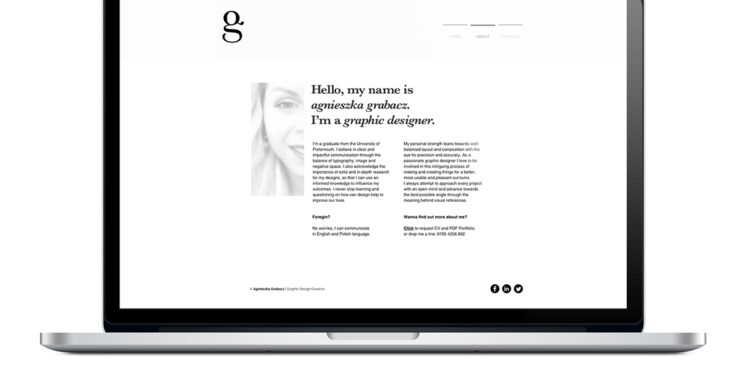Microsoft Word is one of the most popular word-processing software in the world, used by millions of people for various purposes. However, many users may not be aware of all the features and functions that Microsoft Word has to offer. In this article, we will share ten tips and tricks to help you get the most out of Microsoft Word.
Tip 1: Customize the Quick Access Toolbar
The Quick Access Toolbar is a customizable toolbar located at the top of the Word window. It provides quick access to frequently used commands, such as Save, Undo, and Redo. By default, it contains a few basic commands, but you can customize it to add your own favorite commands.
To customize the Quick Access Toolbar, click on the down arrow at the right end of the toolbar and select “More Commands.” From there, you can add or remove commands, change the order of commands, and even create your own custom commands. By adding your most commonly used commands to the Quick Access Toolbar, you can save time and work more efficiently in Word.
Tip 2: Use Keyboard Shortcuts
Keyboard shortcuts are a great way to save time and work more efficiently in Microsoft Word. Instead of using the mouse to click on menu options, you can use keyboard shortcuts to perform common tasks quickly.
For example, pressing Ctrl + S on your keyboard will save your document, and pressing Ctrl + Z will undo your last action. You can find a list of common keyboard shortcuts by pressing F1 in Word and searching for “keyboard shortcuts.”
Tip 3: Create and Use Templates
Templates are pre-designed documents that you can use as a starting point for your own documents. Microsoft Word comes with several built-in templates, such as resumes, cover letters, and business plans. You can also create your own templates to use for your specific needs.
To create a template, start by designing a document that you want to use as a template. Then, go to File > Save As and select “Word Template” from the “Save as type” drop-down menu. Give your template a name and save it to the Templates folder in your Documents folder.
To use a template, go to File > New and select “Personal” or “Custom” to see your saved templates. Select the template you want to use and start editing it to suit your needs. Using templates can save you time and ensure consistency in your documents.
Tip 4: Use Styles
Styles are a set of formatting options that you can apply to text and paragraphs in Word. They include font, size, color, and spacing options, among others. Using styles can make your document look more professional and consistent.
To use styles, select the text or paragraph you want to format and go to the “Home” tab. From there, you can choose from several built-in styles, such as “Heading 1,” “Heading 2,” and “Normal.” You can also create your own custom styles by clicking on the “Styles” dialog box launcher and selecting “New Style.”
Using styles can save you time and ensure consistency in your documents. If you need to change the formatting of your document, you can simply update the styles, and all the text formatted with those styles will update automatically.
Tip 5: Format Text and Paragraphs with Keyboard Shortcuts
In addition to using styles, you can also format text and paragraphs with keyboard shortcuts. For example, to make the text bold, select the text and press Ctrl + B. To make text italic, press Ctrl + I. To underline text, press Ctrl + U.
To format paragraphs, you can use keyboard shortcuts to adjust the alignment, indentation, and spacing. For example, to align text to the left, press Ctrl + L. To align text to the center, press Ctrl + E. To align text to the right, press Ctrl + R.
Using keyboard shortcuts to format text and paragraphs can save you time and make you more efficient in Word.
Tip 6: Use Find and Replace
Find and Replace is a powerful feature in Word that allows you to quickly find specific text and replace it with new text. This can be useful if you need to make a lot of changes to a document, such as changing a name or a date.
To use Find and Replace, go to the “Home” tab and click on the “Replace” button. In the “Find and Replace” dialog box, type the text you want to find and the text you want to replace it with. You can also use options such as “Match case” and “Match whole word” to refine your search.
Using Find and Replace can save you time and make you more efficient in Word.
Tip 7: Insert Hyperlinks
Hyperlinks are links to other web pages, documents, or files. They can be useful for referencing other sources in your document or for directing readers to additional information.
To insert a hyperlink, select the text you want to turn into a hyperlink and press Ctrl + K. In the “Insert Hyperlink” dialog box, enter the URL or file path you want to link to. You can also choose to link to a specific place within a document or to an email address.
Using hyperlinks can make your document more interactive and provide additional information to your readers.
Tip 8: Use Tables and Columns
Tables and columns can be used to organize information in your document and make it easier to read. Tables can be used to display data in rows and columns, while columns can be used to create a newspaper-style layout for your document.
To insert a table, go to the “Insert” tab and click on “Table.” From there, you can choose how many rows and columns you want in your table and customize the look and feel of your table.
To create columns, go to the “Page Layout” tab and click on “Columns.” From there, you can choose how many columns you want in your document and customize the spacing and width of your columns.
Using tables and columns can make your document more organized and easier to read.
Tip 9: Use Track Changes
Track Changes is a feature in Word that allows you to track any changes made to your document. This can be useful if you are collaborating with others on a document or if you need to keep a record of changes made to a document.
To turn on Track Changes, go to the “Review” tab and click on “Track Changes.” From there, any changes made to your document will be tracked, and you can accept or reject changes as needed.
Using Track Changes can help you keep track of changes made to your document and collaborate more effectively with others.
Tip 10: Use the Dictation Feature
The Dictation feature in Word allows you to use your voice to dictate text into your document. This can be useful if you prefer speaking to typing or if you need to dictate text while on the go.
To use the Dictation feature, go to the “Home” tab and click on the microphone icon in the “Dictate” group. From there, speak your text into the microphone, and Word will transcribe your words into text.
Using the Dictation feature can save you time and make you more efficient in Word.
Conclusion:
Microsoft Word is a powerful word-processing software with many features and functions. By using these ten tips and tricks, you can become more proficient in
Word and work more efficiently. Whether you are using Word for personal or professional purposes, these tips can help you get the most out of this popular software.













